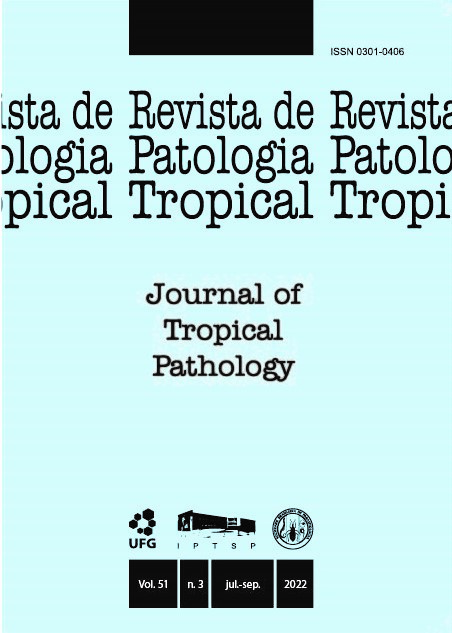Microbiological and parasitological quality of fruit pulps and juices used for detoxifying purposes
DOI:
https://doi.org/10.5216/rpt.v51i3.71342Resumo
ABSTRACT
The juice consumption with detoxifying properties has increased in the last few years, but inadequately produced food may transport pathogens. This study aimed to investigate the occurrence of parasitological and microbiological contamination in fruit juices and fruit pulp used for detoxifying purposes. Twenty samples were analyzed, 10 of fruit pulp and 10 juices from July to August 2018. Thermotolerant coliform, mold, and yeast were counted. Parasitological analysis was performed by spontaneous sedimentation method and sedimentation by centrifugation techniques. Results showed that 20% and 60% of the fruit pulp and juice samples exhibited thermotolerant coliform counts above 1 log CFU/mL, respectively. The results showed that 60% of the pulp samples presented mold and yeast counts above 3 log CFU/mL. The protozoa found in the samples were Endolimax nana, Entamoeba coli, and E. histolytica/E. dispar cysts. The presence of thermotolerant coliforms in juices is an indicator of the presence of enteropathogens, mainly Escherichia coli. The high mold and yeast populations and the presence of protozoa in the fruit pulp and juices indicate hygienic and sanitary failures in the food processing. It may be concluded that there is a need for supervision and training in Good Manufacturing Practices by health agencies, aiming at the food safe production.
KEY WORDS: Coliforms; parasites; food hygiene; food safety.
Downloads
Downloads
Publicado
Como Citar
Edição
Seção
Licença
The manuscript submission must be accompanied by a letter signed by all authors stating their full name and email address, confirming that the manuscript or part of it has not been published or is under consideration for publication elsewhere, and agreeing to transfer copyright in all media and formats for Journal of Tropical Pathology.

